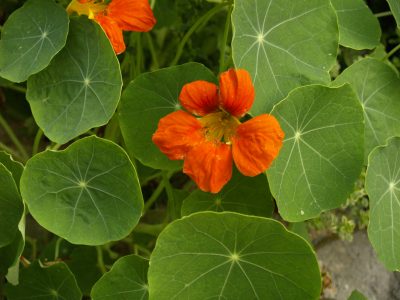Are garden mushrooms toxic to dogs?
In cool weather rains, mushrooms pop up everywhere. And though your initial reaction might be terror, most fungi are actually beneficial and a sign of healthy soil.
But Jackie and Jon Holliday, have a curious Golden Retriever puppy, Sophie, who wants to eat mulch and its mushrooms. Sophie’s in dog obedience training, but puppies do take a little time, as AUGIE can tell you!
So, Jackie wants to know: should she remove the mushrooms? Are they harmful? We consulted Dr. T.J. Palvino at Austin Vet Hospital for the answer.
He reports that many are poisonous to dogs, as they are for us. Since most of us are not experts about mushrooms, he recommends removing them if your dog is inclined to eat them. He also notes that compost piles are very dangerous to dogs. Neurotoxins from bacteria and fungi in decomposing matter, which are good for the compost pile, can result in seizures in dogs if they scavenge it.
So, if your dog wants to forage, restrict or cover your compost pile and remove the mushrooms. And the good news from Dr. Kevin Ong at Texas A&M AgriLife Extension’s Plant Disease Diagnostic lab is that pulling up the mushrooms won’t destroy the mycelial network in the soil.

 Bob Beyer
Bob Beyer Sandra Killough
Sandra Killough Daphne Richards
Daphne Richards
 Trisha Shirey
Trisha Shirey